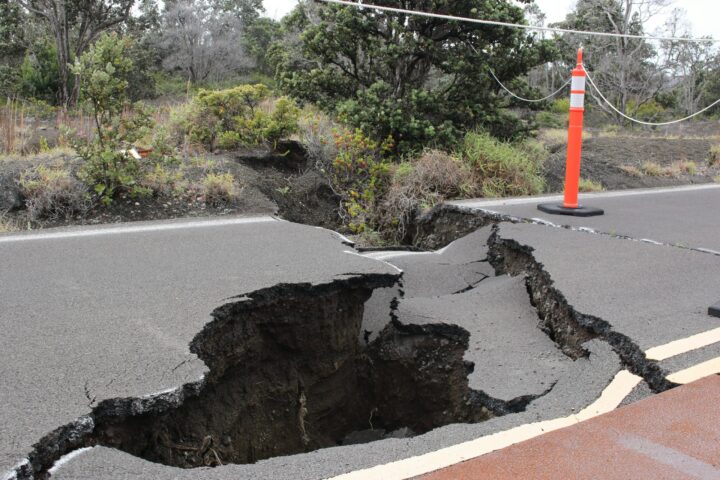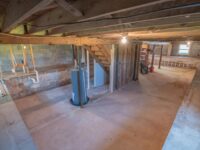The following contribution is from another author.
Key Takeaways
- Earthquake retrofitting enhances the safety and value of homes in seismic regions.
- Homeowners can undertake retrofitting in a few practical steps, ensuring compliance with safety standards.
- Understanding the retrofitting process demystifies the investment and benefits of structural strengthening.
Table of Contents
- Introduction to Earthquake Retrofitting
- Understanding Potential Risks
- Assessing Your Home’s Vulnerability
- Steps in Earthquake Retrofitting
- Common Retrofitting Techniques
- Benefits of Retrofitting
- Ensuring Compliance with Safety Standards
- Conclusion: The Value of Investment
Ensuring the safety of their property is a significant concern for homeowners living in seismic zones. Earthquakes, with their unpredictable nature, have the potential to cause substantial damage to homes, endangering lives and resulting in considerable financial loss. One effective way to mitigate these risks is through eq retrofit, reinforcing and stabilizing the home’s structure to better withstand seismic activity.
Earthquake retrofitting is not just an option; it is a sensible precaution for homeowners who want to safeguard their investments and guarantee the security of their families. This guide explores the retrofitting process, breaking down the steps, techniques, and benefits to demystify what might seem daunting.
Introduction to Earthquake Retrofitting
Earthquake retrofitting refers to a series of modifications made to existing structures to increase their resilience against earthquakes. These structural enhancements may include strengthening walls, bolting weak points, and adding new support systems. The goal is to minimize earthquake damage and protect the physical structure and its inhabitants.
In regions prone to seismic activity, retrofitting becomes a practical necessity. With the continuous advancements in engineering and design, retrofitting processes have become more efficient and accessible to the average homeowner. Understanding these processes can help homeowners choose the right solutions tailored to their needs, ultimately safeguarding their homes and loved ones.
Understanding Potential Risks
Earthquakes pose numerous home risks, ranging from minor structural damage to complete collapse. The extent of the damage relies on various factors, including the earthquake’s magnitude and the building’s structural integrity. Annual seismic activities occur worldwide, with varying degrees of impact.
While predicting when and where these events will happen is impossible, preparing for them can significantly reduce their potential impact. Understanding these risks allows homeowners to take proactive measures, such as retrofitting, to protect their families and investments.
Assessing Your Home’s Vulnerability
Assessing your home’s earthquake vulnerability is crucial before beginning any retrofitting project. It involves identifying weak points in your structure, such as unreinforced walls or an unstable foundation. A structural engineer can conduct a detailed assessment, evaluating the condition of your home and suggesting necessary upgrades.
Factors such as the age of the building, materials used, and previous damage must be considered. This step ensures that any retrofitting efforts are targeted and effective, maximizing the added security the modifications provide.
Steps in Earthquake Retrofitting
Retrofitting your home may seem overwhelming, but it can be broken down into manageable steps. The process often begins with:
- Consult Experts: Engage with professionals such as engineers specializing in seismic improvements. They can offer beneficial perspectives and suggestions based on your home’s needs.
- Plan Strategically: Develop a detailed plan outlining the retrofitting work required. Prioritize areas like foundations and walls that are crucial to your home’s structural integrity.
- Execute the Plan: Implement the retrofitting modifications according to the plan, ensuring each step aligns with safety standards and regulatory requirements.
Common Retrofitting Techniques
Several techniques can be employed in retrofitting a home, each tailored to address specific structural weaknesses. Some of the most common methods include:
- Bracing Walls: This technique involves adding shear walls or bracing existing walls to prevent them from buckling or collapsing during an earthquake.
- Foundation Bolting: Anchoring the structure to its base with bolts significantly reduces the risk of the house sliding or moving during seismic activity.
- Framing Enhancements: Additional framing or upgrading existing structures can increase a building’s resistance to horizontal forces.
Innovative approaches continue to emerge, providing more options for homeowners seeking effective and economical retrofitting solutions.
Benefits of Retrofitting
Retrofitting offers multiple benefits that extend beyond immediate safety. These renovations can increase a property’s market value and potentially lower insurance premiums, as insurers often recognize the reduction in risk associated with retrofitted homes.
Moreover, retrofitted homes typically sustain less damage after an earthquake, reducing repair costs and inconvenience. Investing in retrofitting is, therefore, not just about protection—it’s a strategic financial decision that can yield returns over time.
Ensuring Compliance with Safety Standards
Complying with regional construction regulations and safety guidelines is critical while retrofitting. Non-compliance can lead to legal issues and undermine the effectiveness of your retrofitting efforts. Consult local authorities or building professionals to ensure your retrofitting plans meet all regulations. This compliance enhances safety and may qualify you for tax incentives, offering further financial benefits.
Conclusion: The Value of Investment
Retrofitting homes in earthquake-prone areas is an investment in safety and peace of mind. As seismic activities pose threats, proactive preparedness becomes increasingly essential for homeowners. While the financial commitment might seem significant initially, the long-term benefits, including increased safety, lower repair costs, and enhanced property value, make retrofitting a worthy investment for the discerning homeowner.
















